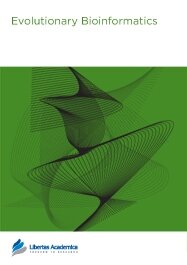

Publication Date: 28 Feb 2007
Journal: Evolutionary Bioinformatics
Citation: Evolutionary Bioinformatics 2006:2 347-356

1Department of Computer Science, Iowa State University, Ames, IA 50011, U.S.A. 2Section of Evolution and Ecology, University of California, Davis, CA 95616, U.S.A.; Current Address, NESCent, Durham, NC 27705, U.S.A.
Abstract: The utility of the matrix representation with flipping (MRF) supertree method has been limited by the speed of its heuristic algorithms. We describe a new heuristic algorithm for MRF supertree construction that improves upon the speed of the previous heuristic by a factor of n (the number of taxa in the supertree). This new heuristic makes MRF tractable for large-scale supertree analyses and allows the first comparisons of MRF with other supertree methods using large empirical data sets. Analyses of three published supertree data sets with between 267 to 571 taxa indicate that MRF supertrees are equally or more similar to the input trees on average than matrix representation with parsimony (MRP) and modified mincut supertrees. The results also show that large dif ferences may exist between MRF and MRP supertrees and demonstrate that the MRF supertree method is a practical and potentially more accurate alternative to the nearly ubiquitous MRP supertree method.
PDF (649.71 KB PDF FORMAT)
RIS citation (ENDNOTE, REFERENCE MANAGER, PROCITE, REFWORKS)
BibTex citation (BIBDESK, LATEX)
XML
PMC HTML

It was a nice experience for me to publish my first paper in Evolutionary Bioinformatics. The peer review process was fast, critical, helpful and fair. The production process was also fast and accurate. Thanks for your hard work.
Facebook Google+ Twitter
Pinterest Tumblr YouTube